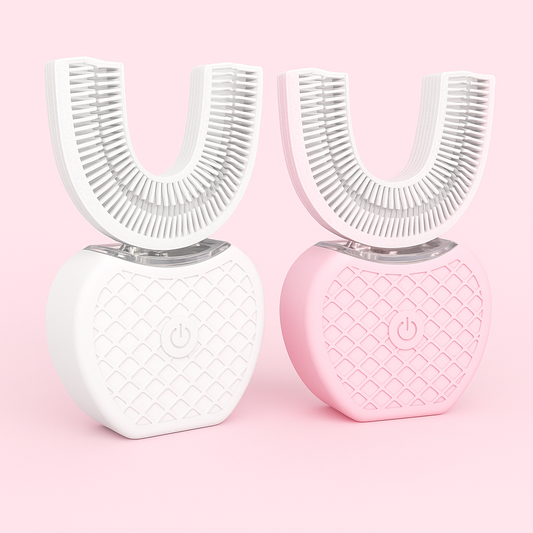Introduction to Niacinamide Serum
As skincare technology advances, certain ingredients continue to stand the test of time. Niacinamide serum is one such star product in 2025, renowned for its versatility and effectiveness in promoting glowing skin and reducing acne. Whether you are a skincare newbie or a beauty enthusiast, understanding the science and benefits of niacinamide can revolutionize your skincare routine. This comprehensive guide delves deep into the properties, benefits, application methods, and expert tips for maximizing the effects of niacinamide serum.
What is Niacinamide?
Niacinamide, also known as nicotinamide, is a form of vitamin B3, a water-soluble vitamin essential for cellular metabolism. It plays a critical role in maintaining healthy skin by supporting the skin's natural barrier function and cellular repair mechanisms. Unlike some skincare ingredients that only target specific concerns, niacinamide offers a multi-dimensional approach to improving skin health.
In skincare formulations, niacinamide is prized for its stability and compatibility with a wide range of other active ingredients, making it a staple in many serums, moisturizers, and treatments designed for both acne-prone and mature skin.
Why Niacinamide Serum is a Skincare Essential in 2025
With new trends and formulations emerging yearly, niacinamide has remained consistently popular due to its scientifically backed benefits and minimal side effects. Here’s why it continues to dominate skincare routines in 2025:
- Proven Efficacy: Numerous clinical studies have demonstrated niacinamide’s ability to improve skin texture, reduce inflammation, and regulate oil production.
- Versatility: Suitable for all skin types, including sensitive, oily, combination, and dry skin.
- Complementary Use: Can be safely combined with many other active ingredients, enhancing overall skincare regimen performance.
- Accessibility: Widely available in various concentrations and formulations, from budget-friendly drugstore options to high-end luxury serums.
The Science Behind Niacinamide: How It Works
Niacinamide influences several biochemical pathways within skin cells:
- Enhances Skin Barrier Function: It stimulates the production of ceramides and other lipids that form the skin’s protective barrier. This helps reduce transepidermal water loss, keeping skin hydrated and resilient.
- Reduces Inflammation: Niacinamide inhibits pro-inflammatory cytokines, calming redness and irritation which is especially beneficial for acne-prone and sensitive skin.
- Regulates Sebum Production: By balancing oil production, niacinamide helps reduce the likelihood of clogged pores and breakouts.
- Boosts Collagen Synthesis: It promotes collagen and elastin production, essential proteins for maintaining skin elasticity and minimizing fine lines.
- Minimizes Hyperpigmentation: Niacinamide interferes with melanosome transfer, reducing dark spots and evening out skin tone.
Comprehensive Benefits of Niacinamide Serum
Niacinamide serum provides an extensive range of benefits, making it a multifunctional skincare powerhouse:
- Glowing, Radiant Skin: By improving hydration and strengthening the skin barrier, niacinamide enhances skin luminosity and smoothness.
- Acne Reduction and Prevention: Its anti-inflammatory and sebum-regulating effects help reduce active breakouts and prevent new ones.
- Reduction of Pore Size: Over time, consistent use can visibly shrink the appearance of enlarged pores.
- Anti-Aging Properties: Stimulates collagen production to reduce wrinkles and improve skin firmness.
- Soothes Sensitive Skin: Calms irritation and redness making it ideal for rosacea, eczema, and other sensitive skin conditions.
- Improves Uneven Skin Tone: Helps fade hyperpigmentation, sun spots, and melasma.
How to Incorporate Niacinamide Serum Into Your Skincare Routine
Getting the most out of your niacinamide serum involves understanding the best application practices. Follow this detailed step-by-step method:
- Cleansing: Begin with a gentle cleanser suited to your skin type to remove impurities without stripping natural oils.
- Toning (Optional): Apply a hydrating toner to balance skin pH and prep the skin for better absorption.
- Niacinamide Serum Application: Dispense 2-3 drops of serum onto your fingertips and gently massage onto your face and neck. Focus on areas of concern such as acne, enlarged pores, or uneven tone.
- Layering: Allow the serum to absorb fully before applying other products. Niacinamide is lightweight and absorbs quickly.
- Moisturizing: Follow with a moisturizer to lock in hydration and support the skin barrier.
- Sun Protection: During your morning routine, finish with a broad-spectrum sunscreen of SPF 30 or higher to protect your skin from UV damage, which can worsen pigmentation and aging.
Consistency is paramount. Use niacinamide serum twice daily—morning and night—for best results, with visible improvements typically appearing within 4 to 8 weeks.
Optimizing Niacinamide Use: Combining with Other Ingredients in 2025
Niacinamide is highly compatible with many skincare actives, enabling you to customize your routine effectively:
- Hyaluronic Acid: This potent humectant complements niacinamide by deeply hydrating and plumping the skin.
- Retinoids (Retinol, Tretinoin): Niacinamide helps reduce irritation and dryness often caused by retinoids, making them a perfect duo for anti-aging and acne treatment.
- Vitamin C (Ascorbic Acid): When applied correctly (with a time gap), niacinamide and vitamin C work synergistically to brighten and protect skin from oxidative damage.
- Azelaic Acid: Combining with niacinamide enhances acne-fighting, anti-inflammatory, and pigmentation-reducing effects.
- Peptides and Ceramides: Support skin repair and boost anti-aging benefits.
However, avoid combining niacinamide with strong acids like glycolic acid or salicylic acid in the same step to prevent potential irritation; instead, use them at different times of the day.
Choosing the Best Niacinamide Serum in 2025: What to Look For
With countless products on the market, selecting the perfect niacinamide serum can be overwhelming. Consider these factors:
- Concentration: Most dermatologists recommend serums with 5% to 10% niacinamide for effective results without irritation. Higher concentrations (above 10%) exist but may increase sensitivity.
- Formulation: Look for additional beneficial ingredients like hydrating agents (glycerin, hyaluronic acid), soothing agents (panthenol, allantoin), and antioxidants.
- Packaging: Choose serums in air-tight, opaque bottles or pumps to protect niacinamide from oxidation and light degradation.
- Brand Transparency: Opt for reputable brands with clear ingredient lists, clinical data, and positive customer reviews.
- Price vs Quality: Effective niacinamide serums can be found across a range of price points; prioritize ingredient quality over branding hype.
Potential Side Effects and How to Avoid Them
Niacinamide has an excellent safety profile, but some users may experience mild side effects:
- Skin Irritation: Redness, itching, or burning sensations may occur, especially with high concentrations or sensitive skin.
- Allergic Reactions: Rare but possible; discontinue use immediately if swelling or severe irritation occurs.
To minimize risks, follow these precautions:
- Always perform a patch test before introducing new products.
- Start with lower concentrations and gradually increase usage frequency.
- Avoid mixing niacinamide with highly acidic products in the same application.
- Consult a dermatologist if you have pre-existing skin conditions or concerns.
Expert Tips for Maximizing Niacinamide Benefits in 2025
To harness the full potential of niacinamide serum, consider these expert recommendations:
- Be Patient: Skincare is a gradual process—consistent daily use over several weeks is key to visible improvements.
- Layer Thoughtfully: Apply lighter serums like niacinamide before heavier creams to ensure optimal absorption.
- Customize Your Routine: Combine niacinamide with complementary actives tailored to your skin’s needs, such as antioxidants for environmental protection or exfoliants for texture improvement.
- Sun Protection Is Essential: Protecting your skin from UV rays enhances niacinamide’s pigmentation-reducing effects and prevents further damage.
- Maintain a Healthy Lifestyle: Hydration, balanced diet, and stress management amplify skincare results.
Frequently Asked Questions About Niacinamide Serum
Is niacinamide safe for sensitive skin?
Yes, niacinamide is generally well-tolerated and often recommended for sensitive skin due to its calming properties. However, always do a patch test first.
Can I use niacinamide serum with other treatments?
Niacinamide is compatible with most skincare ingredients, including retinoids, hyaluronic acid, and vitamin C, but avoid mixing with strong acids in the same step.
How soon will I see results?
Most users notice improvements in skin texture, glow, and acne reduction within 4-8 weeks of consistent use.
Can niacinamide help with hyperpigmentation?
Yes, niacinamide reduces pigmentation by inhibiting melanosome transfer, helping fade dark spots and even skin tone.
Conclusion
Niacinamide serum remains a cornerstone of modern skincare in 2025, celebrated for its multi-faceted benefits spanning glowing skin, acne reduction, anti-aging, and barrier repair. Its compatibility with various skin types and other ingredients makes it a remarkably versatile choice. By understanding its science, selecting the right formulation, and adhering to best application practices, you can unlock radiant, healthy skin that stands up to the demands of the modern world. Embrace niacinamide serum as your go-to solution for a glowing complexion and clearer skin this year and beyond.


